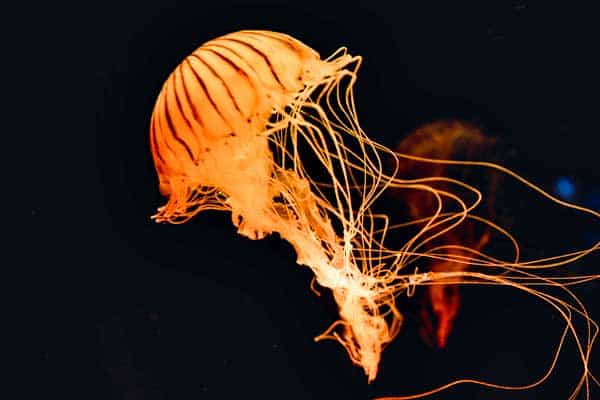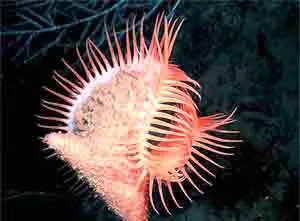Corals sure look like plants or rocks but they are in fact animals. They typically live attached to the ocean bottom which is very atypical for animals.
The fact that they are rooted and look like plants means that many people think they are plans.
Why are corals animals and not plants? Corals are animals by definition because they do not produce their own food. Plants will produce their own food through photosynthesis but corals eat particles that flow by in the sea. They eat with their tentacle arms.
That’s the short answer which we will dive into in more depth below. Because there are a lot of interesting facts to discover with regard to how corals eat.
Table of Contents
What’s The Difference Between Corals And Plants?

So we just mentioned that corals are animals because they do not produce their own food. Plants produce their own food through the process called “photosynthesis” which enables them to do so.
Animals, on the other hand, have to find food and have a digestive system in order to process the food. Corals are no exception here.
Some corals also look much more like rocks.
They have hard surfaces and also sit permanently on the ocean bottom. Actually, corals can have a ton of different colors and look very different from each other which is also why the corals are very popular among divers. They are some of the prettiest places on earth.
I have been diving among coral reefs in Thailand and it was extremely beautiful. One of the biggest experiences I have had. Here’s a tiny video from a dive I did two years ago outside the Phi Phi islands south of Phuket in the southern part of Thailand.
The video starts at 4:52 where I get into the water:
Each Coral Consist Of Thousands Of Animals (polyps)
To say that a coral is an animal is a simple way to explain things. It only relies on the fact that corals do not produce their own food. But when we dig a little deeper we find a more sophisticated type of animal.
Actually, a coral is not ONE animal but a whole COLONY of animals.
That is a much more precise description.
What is a polyp?
The coral is made up of thousands of polyps.
A Polyp is an animal the size of the head of a pin and up to the size of a foot in diameter. Here’s an image of a colony of polyps sitting on the orange coral in the middle of the picture below:
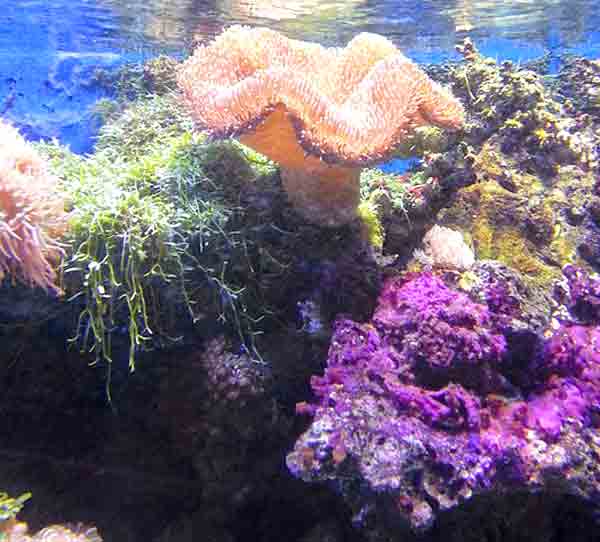
A polyp consists of a soft body that is formed like a tube.
On top of the tube, it has an opening which is the mouth. It has tentacles attached all around the mouth opening which can direct food into its mouth.
The polyps are built together by the stone-like cement they build up underneath themselves.
By sticking together, they can act as a single organism and this is also why it looks more like a single animal than a colony of animals.
The symbiosis of the coral reef
The corals themselves are also typically found in large numbers called a “reef”. The reef is made up of corals.
Corals live in symbiosis with little plant-like algae called zooxanthellae. These algae are single-celled plants that live inside the coral’s tissue. The algae, in return, produce oxygen which is a vital part of the eco-system of the reef.
The corals use oxygen to grow so we are talking about the perfect symbiosis here. The corals need the Zooxanthellae and the Zooxanthellae need the corals.

Corals Are Translucent
The wide range of colors we find at the corals are a product of the zooxanthellae (algae) that live inside the corals.
They are translucent, which means that they are semi-transparent. This allows the light to reflect beautiful colors and as long as the algae live inside the corals the colors flourish.
But when corals bet stressed by the pollution they lose the algae and they become white. This process is called “Coral Bleaching”.
When that happens the corals are still alive but they are slowly dying. They need clean water, otherwise, they will turn into dead white skeleton-like stones within a couple of weeks!
As soon as the algae disappear, the corals can no longer feed. They can still eat the zooplankton but they are dependent on the photosynthesis process from the algae in order to survive. When that happens they will die and stay dead.
How Do Corals find food?
As we know, Corals are permanently attached to the ocean floor. So they cannot hunt down food or actively seek out or prey on food or other animals.
So how do they find food?
They don’t.
Food finds them, so to speak.

When plankton and other microorganisms flow around in the water they will get caught by the tentacle arms. Some corals have very visible tentacles while others have tiny arms.
So you won’t necessarily notice the arms unless you know exactly what to look for.
This is very similar to how Jellyfish find food.
They are not attached to the bottom of the ocean as they float around freely but they have similar ways of finding food. A few of the jellies can actively seek out food but the vast majority of the jellies will not hunt food but just wait for the plankton and particles to swim by them.
Then they will also use their tentacles to direct the food into their mouth. The jellies are actually one of the closest relatives to corals.
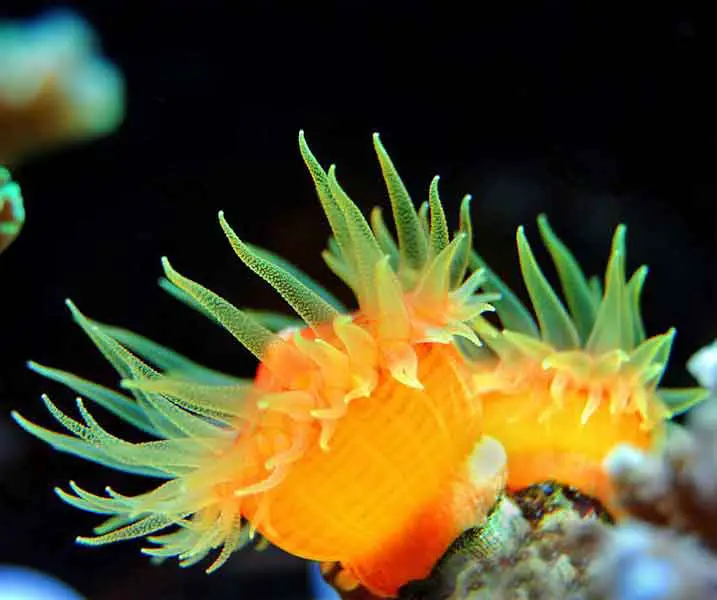
The corals can sting
The tentacles on top of the corals can sting the animals and they are toxic.
Some of the bigger corals can actually sting a tiny fish and paralyze its muscles long enough to be able to transport it into the mouth!
So the corals do not only eat the zooplankton. They can also feed on other tiny sea creatures that float or swim by.
How Do Corals Eat The Food?
The corals use their tentacle-like arms to catch the zooplankton floating around in the ocean.
Win the zooplankton touches the tentacle the coral transports it into the little hole that is the mouth. When the Carl has eaten all it needs from the zooplankton it will spit out the waste through the same hole.
In other words, the mouth also functions as the animal’s anus!
As you see, the coral is a very primitive animal. It’s very passive and all it really does is transporting the food from the tentacles into the mouth and eat whatever it needs from it. Before it spits it out the same way came in. It just sits waiting for food to swim by it all by itself.
When Do Corals Eat?
But that doesn’t mean that the corals eat constantly.
It will only eat the amount of zooplankton it needs and it will typically do so at night. When darkness falls, the plankton rises from the bottom of the ocean and it’s time for the reef to eat.
Another weird sea animal (with similar eating habits) that amazes people is the Jellyfish. We have written a separate article about how Jellyfish eat.
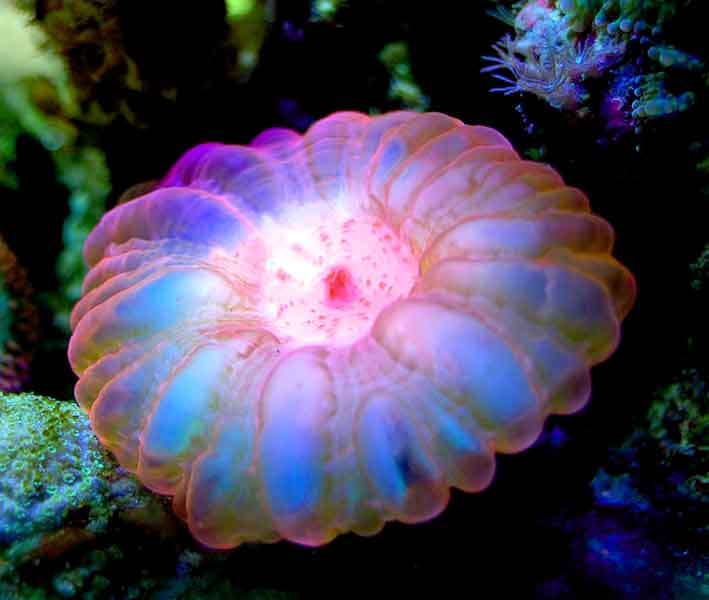
Where Do Corals Live?
Corals are always found in warm ocean water not too far from the surface of the water.
As we saw above, the corals are dependent on algae photosynthesis so they need to be close to sunlight. This is also the reason why it is popular for divers.
The corals will be close enough to the water surface that you can see it’s many colors from above the water. Otherwise, it would not be able to catch the sun rays which are important for them (or for the algae).
Why Are Corals So Special?
Coral reefs are home to a vast majority of the species on earth. Scientists believe that at least 25% of all marine species on earth are living in coral reefs.
According to National Geographics, it is assumed that more than 2 million animals and lifeforms are living at the coral reefs.
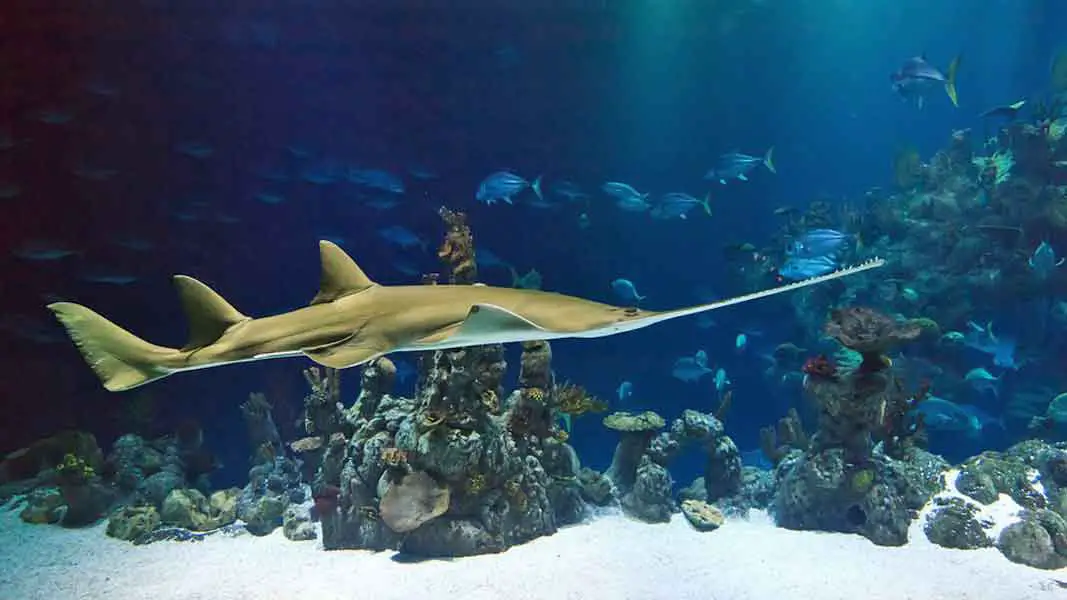
And many more species are dependent on the survival of the reefs.
Many of the little colorful fish we find in the oceans are growing up inside the coral reefs because they find protection among the corals. They can quickly hide and find shelter inside the polyps when an enemy approaches.
When you combine that with the fact that corals only take up less than 1% of the ocean floor, you realize just how precious these corals are.
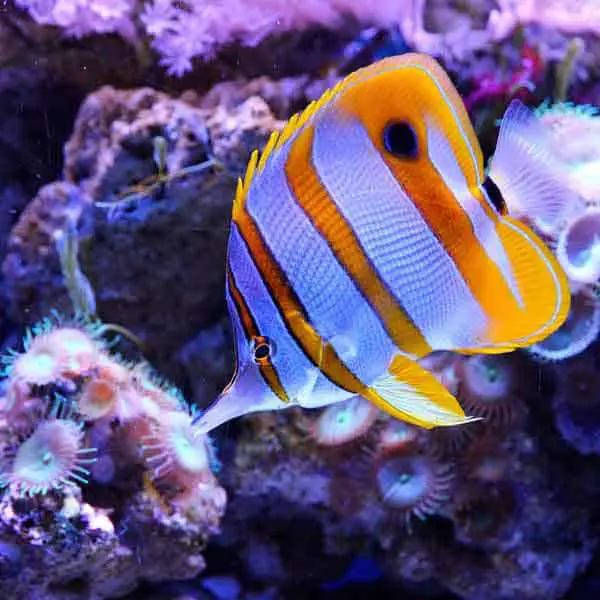
It’s immensely important that we do all we can to preserve the last corals all over the world. Otherwise, we might end up losing a huge portion of the lifeforms on earth as we know it today.
The coral animals are building up the coral reef by their waste product: Calicles.
Each polyp produces this hard stone-like decreet which is the whole foundation of the coral reef. It is also the support and protection of the coral as it functions as a skeleton for the animal.

How big is the biggest coral reef?
The biggest coral reef is found on the east coast of Australia. It is called the “Great Barrier Reef” and it is more than 1,200 miles (1900 kilometers) long!
Here you find a huge amount of animals and there are many things you can do to help to preserve the corals.

Sources: BBC, National Geographic



